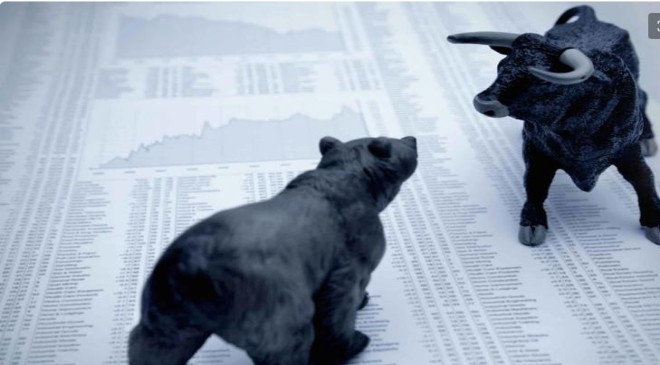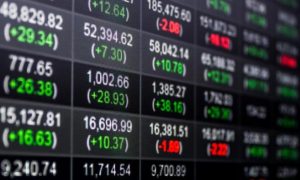The major U.S. stock market indexes gave back a little ground on Friday, but the session’s declines weren’t enough to stop the Nasdaq Composite (NASDAQINDEX: ^IXIC), S&P 500 (SNPINDEX: ^GSPC), and Dow Jones Industrial Average (DJINDICES: ^DJI) from posting solid gains for the week. The pullback on Friday was modest, and for a day on which both stock futures and options were expiring, volatility was actually relatively muted.
| Index | Daily Percentage Change | Daily Point Change |
|---|---|---|
| Dow | (0.32%) | (109) |
| S&P 500 | (0.37%) | (16) |
| Nasdaq | (0.68%) | (93) |
Data source: Yahoo! Finance.
There’s been a lot of talk lately about just how narrow the stock market rally has been in 2023. In large part, the AI stock craze has helped push a small number of giga-cap tech giants higher, while the rest of the market hasn’t advanced at nearly the same pace. Now, though, there are signs that a broader swath of the market is ready to participate in an upward trend. That could make some ETFs that have recently underperformed look interesting again.
Also Read– U.S. stocks rally as inflation data cements bets on rate hike pause
When the biggest stocks outperform
Most exchange-traded funds track popular indexes like the S&P 500 or the Nasdaq 100, and among the top indexes in terms of popularity, the vast majority weight their component stocks by market capitalization. That means that investors in an index ETF will typically have a larger amount of their money invested in the largest companies in that index compared to the smaller companies.
One impact of using indexes that are weighted by market capitalization is that investors miss out on some of the diversification that ETFs can provide. For instance, when you look at the SPDR S&P 500 ETF (NYSEMKT: SPY), you’ll find that the five largest companies in the fund make up almost a quarter of its assets. Apple (NASDAQ: AAPL) and Microsoft (NASDAQ: MSFT) alone add up to nearly 15% of its holdings.
Read More:-Overheated Market? Fidelity’s Jurrien Timmer Believes It’s ‘Almost’ In A New Bull Run
Narrower index ETFs are often even more concentrated. The Invesco QQQ ETF (NASDAQ: QQQ) has over 25% of its assets invested in Apple and Microsoft, and nearly half of its assets are invested in the five highest-market-cap companies in the index.
For investors in those ETFs, that tilt toward the top stocks in the most popular indexes has been extremely lucrative recently. Over the past year, the S&P 500 ETF is up 19% on a total return basis. The Invesco QQQ ETF has soared 32%, reflecting the outperformance of the Nasdaq. However, if those largest stocks start to underperform, it could weigh on the returns of these popular ETFs.
Also Read- 4 Unique Growth Stocks You’ll Regret Not Buying in the Wake of the Nasdaq Bear Market Dip
The role of equal-weight ETFs
One solution to the market-cap issue is to invest in equal-weight ETFs. Funds like the Invesco S&P 500 Equal Weight ETF (NYSEMKT: RSP) and the Direxion Nasdaq-100 Equal Weighted Index ETF (NYSEMKT: QQQE) aim to eliminate the outsized influence of the most massive companies by following a simpler methodology. Each quarter, equal-weight ETFs rebalance their portfolios, selling shares of stocks that have outperformed and buying more shares of those that have underperformed. That way, investors get fairly consistent exposure to each of the hundreds of stocks tracked by those indexes.
Over the past year, equal-weight ETFs haven’t kept up with their market-cap weighted peers because of the outperformance of the giga-cap stocks. The Direxion Nasdaq-100 Equal Weighted Index ETF has returned 23%, lagging by nearly 9 percentage points. Invesco’s equal-weight S&P fund is up just 12%, giving it 7 percentage points of underperformance.
Also Read– One in 100 current account applications is fraudulent, says Experian
The question is whether those smaller companies will see their stock prices catch up to the gains of their larger counterparts. Debate on that topic is fierce. Some pundits and experts believe that the companies with the most financial resources will be best positioned to take advantage of artificial intelligence and other new technologies. Others believe that a reversion to the mean is inevitable after the biggest stocks in the market get bid up to high valuations.
If you believe that more diversification is better than less, then check out equal-weight ETFs. They aren’t perfect, and they don’t always outperform. But if the recently lagging stocks that have tiny weights in market cap-weighted ETFs start to get going, equal-weight funds could deliver market-beating performances.

































